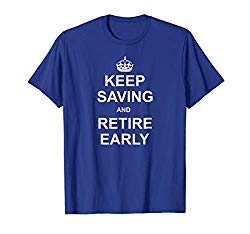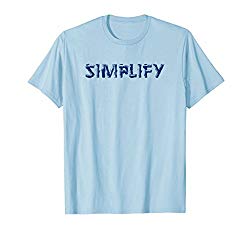How Much Does Your State Spend On Public Schools Per Pupil?
If you are considering a move or possibly geoarbitrage in the United States, there are endless things to consider. If you have school aged kids, then the quality of public schools is definitely one of those things.
The website Governing published 2015 Census data on education spending per pupil and elementary/secondary education revenues for each state. It seems that 2015 is the latest data published as of this post.
The data have six categories:
- Total Elementary/Secondary Public School Spending
- Total Elementary/Secondary Public School Spending Per Pupil
- Total Elementary/Secondary Public School Salaries & Wages
- Total Elementary/Secondary Public School Salaries & Wages Per Pupil
- Total Elementary/Secondary Public School Employee Benefits
- Total Elementary/Secondary Public School Employee Benefits Per Pupil
So as you can see, it’s really three distinct categories, with a total amount spent and a total spent per pupil for each category.
The total amount spent should not matter so much as a raw number because without knowing the number of students it’s relatively meaningless. States with large populations will of course generally have larger total amounts.
The categories to focus on are total spending per pupil, salaries and wages per pupil, and employee benefits per pupil.
So here are the top five and bottom five for each of those three important categories.
Total Elementary/Secondary Public School Spending Per Pupil – Highest Five
| New York | $21,206 |
| Alaska | $20,172 |
| Washington, D.C. | $19,396 |
| Connecticut | $18,377 |
| New Jersey | $18,235 |
Total Elementary/Secondary Public School Spending Per Pupil – Lowest Five
| Utah | $6,575 |
| Idaho | $6,923 |
| Arizona | $7,489 |
| Oklahoma | $8,082 |
| Mississippi | $8,456 |
Total Elementary/Secondary Public School Salaries & Wages Per Pupil – Highest Five
| Washington, D.C. | $13,497 |
| New York | $11,529 |
| New Jersey | $10,557 |
| Vermont | $10,270 |
| Connecticut | $10,265 |
Total Elementary/Secondary Public School Salaries & Wages Per Pupil – Lowest Five
| Utah | $3,875 |
| Idaho | $4,139 |
| Arizona | $4,467 |
| Oklahoma | $4,480 |
| Mississippi | $4,980 |
Total Elementary/Secondary Public School Employee Benefits Per Pupil – Highest Five
| Alaska | $7,765 |
| New York | $6,256 |
| Connecticut | $5,128 |
| New Jersey | $4,646 |
| Vermont | $4,425 |
Total Elementary/Secondary Public School Employee Benefits Per Pupil – Lowest Five
| Texas | $1,059 |
| Arizona | $1,413 |
| Idaho | $1,495 |
| Oklahoma | $1,523 |
| Florida | $1,561 |
As you can see, New York, Connecticut, and New Jersey are in the top 5 highest for all three categories. And Arizona, Oklahoma, and Idaho are in the bottom five for all three lowest categories.
On their site you can also see the spending in each state by function – Instruction, Administration, Pupil Support, etc. As financial warriors we want to know where our hard earned tax money is going and this data allows you geek out and really dive into it.
No Maps?
This site is a gem and has the data displayed very elegantly using Plotly. Buuuuut….. they didn’t map the darn data! Seeing things in geographic context adds so much to the conversation. You pick up patterns, regional differences and similarities, and sometimes even weird relationships between adjoining states.
I looked and couldn’t find this data mapped on the web, only older versions from 2012 and earlier. So, since I’m a dork and don’t have a life, I mapped it in my amazing titanium-coated super-premium wonder-mapping thingamajiggy.
I only mapped the three categories that matter, which is the “per pupil” categories. Let’s take a look.

In this map it’s clear to see that the South spends less per pupil in general, with Louisiana being a bit of a regional anomaly. And Wyoming is a clear standout in the West as most of the highest spending states are in the East with Alaska as an addition to that.
On to the next map….

This map isn’t drastically different but does have subtle changes. The South pays it’s public school employees less per pupil in general, but Texas and Missouri have been added to Louisiana as regional standouts. Wyoming is still an anomaly in the West.
And the last map…

This map shows the situation for the South to be even more homogeneous. Again Louisiana and Wyoming are standouts in their respective regions. Also notably Washington D.C. pays by far the highest wages per pupil (2nd map), but is only in the middle category on benefits paid per pupil (3rd map).
What Does Money Buy In Education?
Now for the fun part. If you’re saying “So what?”, then yes, just simply listing how much each state uses tax dollars to pay for public education per pupil is, well, just a number. What you really want to see is what kind of results they’re getting.
And more importantly, the juiciest part is to see if the states that are spending the most are getting the best results. Or vice-versa, are the states that are spending the least money per pupil lagging behind in key measures?
Well, I’m here at your service… The best data aggregated by state that I could find to rank results of public education – in other words, how well are the kids doing – comes in three flavors. I found:
- High School Graduation Rates (2015)
- Percent of High School Graduates Going Directly To College (2014)
- Average Total SAT Scores (2017)
Let’s call these the “outcome based measures”. Yes the data are from different years but it was the best I could find (I’m doing this for free ya know….) I can’t imagine these numbers would change drastically from one year to the next for a given state.
And I know, I know, standardized tests such as the SAT have plenty of flaws and are not the ultimate measure of a students aptitude or how much they learned. Got it. I’m running this analysis with the data I have. Now that we have your objections out of the way ;)….
So here’s what I did – I used the rank of states for how much they spend on Elementary/Secondary Public School Spending Per Pupil as the main driver. I listed them in rank order from 1 – 51 (including Washington D.C.).
Then, I looked at each states’ respective rank in the three outcome based measures. If the rank for any of those was more than 20 points lower, it’s highlighted in BOLD RED in the chart below.
Conversely, if the states rank in any of the outcome based measures was 20 points higher than their total spending per pupil rank, it’s highlighted in BOLD GREEN.
So I’m sniffing out the anomalies. Common thinking is the more of your hard earned tax dollars spent per pupil on public education, the better the results will be.
Will they? Let’s GO!
| State | Total Elementary/Secondary Public School Spending Per Pupil | Total Elementary/Secondary Public School Spending Per Pupil RANK | Percent of High School Graduates Going Directly to College (%) (2014) | Percent of High School Graduates Going Directly to College (%) RANK | % High school graduate | % High school graduate RANK | Average Total SAT Scores 2017 | Average Total SAT Scores 2017 RANK |
| New York | $21,206 | 1 | 69% | 7 | 85.60% | 38 | 1052 | 40 |
| Alaska | $20,172 | 2 | 44% | 49 | 92.10% | 4 | 1080 | 31 |
| Washington, D.C. | $19,396 | 3 | No Data | n/a | 89.30% | 24 | 950 | 51 |
| Connecticut | $18,377 | 4 | 73% | 2 | 89.90% | 18 | 1041 | 44 |
| New Jersey | $18,235 | 5 | 70% | 5 | 88.60% | 27 | 1056 | 38 |
| Vermont | $18,039 | 6 | 54% | 42 | 91.80% | 6 | 1114 | 24 |
| Wyoming | $16,055 | 7 | 54% | 43 | 92.30% | 3 | 1230 | 11 |
| Massachusetts | $15,592 | 8 | 75% | 1 | 89.80% | 19 | 1107 | 26 |
| Rhode Island | $15,179 | 9 | 62% | 29 | 86.20% | 35 | 1062 | 36 |
| Pennsylvania | $14,717 | 10 | 62% | 30 | 89.20% | 25 | 1071 | 34 |
| New Hampshire | $14,697 | 11 | 62% | 32 | 92.00% | 5 | 1052 | 41 |
| Maryland | $14,192 | 12 | 64% | 16 | 89.40% | 23 | 1060 | 37 |
| Delaware | $14,120 | 13 | 63% | 22 | 88.40% | 28 | 996 | 50 |
| Illinois | $13,755 | 14 | 62% | 31 | 81.90% | 50 | 1115 | 23 |
| North Dakota | $13,320 | 15 | 66% | 12 | 91.70% | 7 | 1256 | 6 |
| Maine | $13,257 | 16 | 55% | 41 | 91.60% | 8 | 1012 | 47 |
| Hawaii | $12,855 | 17 | 61% | 37 | 91.00% | 11 | 1085 | 29 |
| Minnesota | $11,949 | 18 | 70% | 4 | 92.40% | 2 | 1295 | 1 |
| Nebraska | $11,946 | 19 | 63% | 25 | 90.70% | 15 | 1253 | 7 |
| Ohio | $11,637 | 20 | 63% | 26 | 89.10% | 26 | 1149 | 19 |
| Michigan | $11,482 | 21 | 64% | 15 | 89.60% | 21 | 1005 | 48 |
| Wisconsin | $11,375 | 22 | 61% | 34 | 91.00% | 12 | 1291 | 2 |
| West Virginia | $11,359 | 23 | 55% | 40 | 85.00% | 43 | 1086 | 28 |
| Virginia | $11,237 | 24 | 68% | 9 | 88.30% | 30 | 1102 | 27 |
| Montana | $11,028 | 25 | 61% | 36 | 92.80% | 1 | 1196 | 17 |
| Louisiana | $11,010 | 26 | 70% | 6 | 83.40% | 48 | 1198 | 16 |
| Iowa | $10,944 | 27 | 67% | 10 | 91.50% | 9 | 1275 | 3 |
| Washington | $10,735 | 28 | 50% | 46 | 90.40% | 16 | 1075 | 32 |
| California | $10,467 | 29 | 61% | 35 | 79.80% | 51 | 1055 | 39 |
| Oregon | $10,442 | 30 | 48% | 47 | 89.80% | 20 | 1108 | 25 |
| Missouri | $10,147 | 31 | 62% | 28 | 88.40% | 29 | 1271 | 4 |
| Kansas | $10,040 | 32 | 65% | 13 | 90.20% | 17 | 1260 | 5 |
| South Carolina | $9,953 | 33 | 68% | 8 | 85.60% | 39 | 1064 | 35 |
| New Mexico | $9,752 | 34 | 63% | 21 | 84.20% | 47 | 1138 | 20 |
| Arkansas | $9,694 | 35 | 64% | 19 | 84.80% | 44 | 1208 | 14 |
| Indiana | $9,687 | 36 | 61% | 33 | 87.80% | 32 | 1074 | 33 |
| Kentucky | $9,630 | 37 | 64% | 18 | 84.20% | 46 | 1247 | 8 |
| Georgia | $9,427 | 38 | 64% | 17 | 85.40% | 41 | 1050 | 42 |
| Colorado | $9,245 | 39 | 58% | 39 | 90.70% | 14 | 1201 | 15 |
| Alabama | $9,128 | 40 | 62% | 27 | 84.30% | 45 | 1165 | 18 |
| South Dakota | $8,937 | 41 | 67% | 11 | 90.90% | 13 | 1216 | 13 |
| Florida | $8,881 | 42 | 63% | 20 | 86.90% | 33 | 1017 | 46 |
| Texas | $8,861 | 43 | 59% | 38 | 87.90% | 31 | 1020 | 45 |
| Tennessee | $8,726 | 44 | 65% | 14 | 85.50% | 40 | 1228 | 12 |
| North Carolina | $8,687 | 45 | 63% | 24 | 85.80% | 37 | 1081 | 30 |
| Nevada | $8,615 | 46 | 53% | 44 | 85.10% | 42 | 1116 | 22 |
| Mississippi | $8,456 | 47 | 72% | 3 | 82.30% | 49 | 1242 | 9 |
| Oklahoma | $8,082 | 48 | 63% | 23 | 86.90% | 34 | 1047 | 43 |
| Arizona | $7,489 | 49 | 52% | 45 | 86.00% | 36 | 1116 | 21 |
| Idaho | $6,923 | 50 | 44% | 50 | 89.50% | 22 | 1005 | 49 |
| Utah | $6,575 | 51 | 45% | 48 | 91.20% | 10 | 1238 | 10 |
Yowzers. So, if money spent per pupil correlated directly to results you would not expect to see too much red or green in the chart above.
In other words, the states spending the most should have similar high-ranking outcomes (graduation rates, SAT scores etc). And the states spending the least should have lower ranks.
In short, if a state has a red number it means they might not be getting their money’s worth in that measure. If a state has a green number it means they’re outperforming in that measure based on their spending.
And I only highlighted the 20-point differences, there are plenty of out-performers and under-performers that didn’t meet that threshold but came close. Some notables,
New York – they rank 1st in money spent per pupil but only 7th, 38th, and 40th in the outcome measures.
Washington D.C. ranks 3rd in overall money spent per pupil but only 24th and 51st in two outcome measures, with no data for the other. Granted, D.C. is the only city here in a list of states, so with big-city problems like any other, this is kind of expected. But it also shows that simply spending more is maybe not the full solution.
Rhode Island ranks 9th overall in total spending per pupil, but ranks 29th, 35th, and 36th in the 3 outcome measures.
Minnesota – they only rank 18th in total money spent per pupil, but rank 4th, 2nd and 1st in the three key outcome measures.
South Dakota – they only rank 41st in total money spent per pupil, but rank 11th, 13th, and 13th in the three outcome measures.
Mississippi – they only rank 47th in total money spent per pupil, but rank 3rd, 49th, and 9th in the outcomes. Weird, it seems that their graduation rate is bad, but those who do graduate go to college at a very high rate as compare to the rest of the US.
Overall, the trend for SAT scores is the most interesting. Most of the high spending states are doing bad in that measure, and most of the lower spending states have higher scores.
I suspect this is partially because the lower spending states “train to the test”, but that can’t be the whole answer. Remember, these spending values are for all of elementary and secondary public schools. I highly doubt those states are training 2nd graders to the SAT test…. So let’s look at this a little further.
Take The Last Train To Dorksville
Ever heard of Spearman’s Rank Correlation Coefficient? No? Good, then you probably have a more active social life than I do.
It’s a nonparametric measure of rank correlation, or the statistical dependence between the rankings of two variables. Basically it compares two sets of ranked data to spot correlation.
So, if one would expect more spending per pupil in public schools to produce better SAT scores, then the expected scatter plot would look something like this. (*this is NOT the real data)

Leave it to me to finish this dweeb-fest with a scatter plot, just to see what happens. I present the below, with the actual data.

The data are clearly not that correlated. But there is a faint trend line where one should be in between the outlier states, which are substantial in number.
Ok ok, I couldn’t resist. I was so curious to see the SAT scores on the map to look for regional patterns I went ahead and put the data in my magic machine. I think that was also after my third Moscow Mule…

Upper Midwest representin’!! Now let’s break it down by the ERW and the Math scores… Naww, just kidding. I did download that data but we’ll put an end to this madness here.
But wow. The Upper Midwest obviously has a way with the SAT test, and the Northeast is lagging behind. Actually the whole East Coast is kind of a lighter color on the map. See what I mean about regional patterns, it’s fascinating isn’t it 🙂
In Summary
The point of this post is not to argue for or against more spending on public schools. We do, as a country, spend more per pupil, adjusted for inflation, than we did 40 or 50 years ago. But not as much as some have claimed. And results, generally aren’t all that good. It’s a complicated issue with many aspects and it’s not my intent to start a holy war with this post.
My main goal here is to lay out some data to help you if you are considering a move to another state, plain and simple. Geoarbitrage is a great tactic to get to financial independence. And if you have school aged children, the quality of education in a prospective location is likely one of the major factors you need to look at.
As a geographer by trade, geoarbitrage interests me as a future desire in retirement, but also as a topic to explore with data. I hope to continue to research various aspects of finance as related to geography going forward. And I certainly hope you find these kinds of posts helpful.
Be sure to check out my Geoarbitrage Resources Page that has tons of great tools to help you find your perfect location.











































Way to wrap it up with a scatter plot lol. Yeah i actually wasn’t expecting those results, it’s funny you would naturally assume that higher spending would correlate with higher results, but clearly that’s not the case. Very well written!
Thanks, I’m all about the scatter plot. I have quite a few school teacher friends, and they confirm that throwing more money at schools is not the only answer and even sometimes hurts more than helps.
I think I love you.
This is all very surprising. Look at the SAT scores in the Midwestern States! Wow!
I thought Washington would spend a lot higher in cost per child. Oh well, at least we’re scoring better than Cali and Oregon in graduation rates.
I’m blushing Lily, and I hope your husband isn’t the violent type… 😉
Washington does look pretty good in their respective region, with pretty high graduation rates.
Oregon has a dismal graduation rates. I think we’re in the bottom 5.
We’re in a really good school district so I’m not too worried. Whenever the school needs money, they just call on the parents. I heard that WA is better.
Yep, Oregon is 47th in graduation rates. You’re right though, the immediate locality matters a lot & parents do help with funding a lot in some areas. I’m not sure it’s possible to get those numbers…
I’m surprised that California is so average. Probably because we passed Prop 13 in the late 1970s and it is still in force today, keeping property taxes capped at 1%. Otherwise, I think CA would be up there in spending with New York. We have a lot of immigrants in the schools and it takes extra effort to teach the language skills. I wonder if that is a reason the Midwest has such good results by comparison.
Keep drinking those Moscow Mules (of course in the cool, chilled copper cup), because your data rocks!
Great insight Susan! I too expected Cali to be higher in money spent but didn’t know about that property tax cap. And a great point on the immigrant issue and the language barrier. It has to create complexities and funding needs for sure.
I do have chilled copper cups, I’m such a consuma sucka!!
Being raised and going to school my whole life in the northeast it doesn’t surprise me in how much that region spends on schooling. I had to hear it from my parents my whole life! 😉
What is surprising is how lower test scores, I wonder if that has to do with the huge urban populations up there? Maybe they need to take a page out of the upper Midwest’s book cause whatever they’re doing they’re doing it right!
Good insight, I thought the same thing. The preponderance and density of large cities with poorer populations and more immigrants surely has an effect on the NE’s results.
This is fascinating. Our education systems is in crisis and it certainly seems like money alone won’t solve the problem, We spend bucco bucks to send my daughter to private school. one year in, the education is far superior.
I agree Doc, just tossing more money at the the problem isn’t the answer. I’m a firm believer in private schools, but they of course come with a price tag that’s unreachable for many
i knew we were throwing our hard earned money in the toilet in ny state. i see something at work here i have a problem with and it’s the filthy tier system for teachers’ pay. i know some newer teachers who started in the past 15 years who make a lot less than more senior ones who will ride that gravy train right through retirement. do you think this is all wage and benefit or something idiotic like putting iPads all over the place in schools where the kids couldn’t begin to tell you how the damned thing works?
I teach but at the collegiate level so I’m not knowledgeable enough about public elementary schools to answer your questions. To your point about iPads, I have heard crazy stories of the misuse of technology in schools, mostly from poor planning or the “we need those because they’re cool” type of thinking. Coolness doesn’t necessarily mean it’s the right thing for schools.
Very interesting post. We’re in the process of moving from PA to UT prior to my daughter starting school and we have several PA teacher friends telling us how bad the education is there (based on how much is spent on education). Interesting to see comparable or better outcomes in UT for far lower spending, as that was our one concern with the move after hearing this argument so many times.
Thanks Chris! Yes, Utah spends very little, but they seem to get a pretty good bang for their buck. The only thing they ranked low in was the % of graduates who go to college. But as we outdoorsy folks know, many of them become climbing and skiing guides, which is waaaaay better 😉
Another thing to consider about the SAT test is that in the Mid-West (and some areas of the West) the ACT is more common. Students in those areas who take the SAT are those who are seeking admission to schools in the Northeast and East in general. This means that they also tend to be more high achieving (often seeking to attend Ivy League schools specifically). Students who are looking for admission to state schools (in these geographic areas) where admissions requirements are sometimes more lenient tend to take the ACT which is rarely used as you have used it to show the achievement levels of these schools. I said all that to say that the whole picture of the way spending is correlated to scores is a skewed.
Thanks for the comment Rebecca and the insight into the ACT/SAT dynamic. Even taking the SAT factor out of the equation, the midwest still did pretty well in graduation rates and % going to college. and many of the lower spending states did as well.
And as another commenter stated, public schools of course also get money from parents and other places that are hard to track, so in reality the situation is more complex. I’m just working with the data I have available.
Interesting. The results are not what I would have expected! Great set of data Accidental Fire!
I didn’t expect it either. That’s why I like doing this stuff, it’s fun to learn and get the info out there.
Datadatadatadatadata!!!!! I wonder what charts four Moscow Mules would have produced…
I also remember the Upper Midwest being rock stars when it came to lower debt and all that good stuff from some of your previous posts, non? Garrison Keillor was right–all the kids in Lake Wobegon *are* above (the national) average!
Four Moscow Mules would have likely produced instant sleep…. I’m in my lightweight phase of life.
And yes, the Upper Midwest has something going on. They had very low “debt in collection” levels. Smart & financially responsible…. I may have to reconsider for geoarbitrage!
As you know, DC is its own very complicated case study. They spend a lot on public school education but have very poor results. Part of it is, as you note, that it’s a city compared to states. Part of it is that it’s got such a reputation for bad schools that anyone with money in DC is going to send their kids to private schools, so the public schools have a very high proportion of low-income students and because DC is urban, a lot of schools are in high-crime areas. So you need a lot of money to lure teachers to those schools and to get help for kids that need it most, and you’re still not going to get the results of an average school, which has some middle or high income students. Then there are the scandals where teachers are passing their students even when they’ve missed too many classes, so they might even be doing worse than it says.
So I’ve never equated high spending with good results, but it’s not simply that money is being misspent.
Great comment and yes, it’s very complex. Having myself grown up in Baltimore – a big city that is WAY more poor, crime-ridden, and destitute than D.C. – I’ve seen all sorts of angles and layers to this problem. Sometimes city schools have buildings that are literally falling apart, and that’s a problem that obviously needs money to fix.
The bottom line is that poor areas – whether they be urban as in Baltimore and parts of D.C., or rural like Appalachia, are always going to have issues with public schools. Much of that comes back to lack of parents and role models, or what is commonly called “the cycle of poverty”. And once that layer of the onion is peeled back the problem broadens itself tremendously, and it’s clear to see there’s no easy fix.
Very informative blog. Loved the detail.
Thanks very much Mark, glad you enjoy it!
This doesn’t surprise me. The best predictor of student success is the teacher (next is leadership), and an excellent teacher can pretty much work miracles with just some pencils and paper. The problem? They can’t teach! A lot of this money comes with fine print… mandatory test after test, mandatory professional learning/meetings that takes what little time they do have for planning, and I could keep going. The best teachers realize they are not getting to do what they signed up for… and they leave. Because of ESSA, districts must publish how every dollar is allocated to meet compliance, but those dollars just don’t represent what is truly going on in public education. Thanks for the data, details and discussion here! :]
Thanks for such a great comment Misty, you sound like a teacher or someone who definitely has insider knowledge of public schools. I realize it’s a massively complex issue. I would also add that I think parents (ie, good ones) are also a huge predictor and that’s something that isn’t possible to measure or quantify.
You would be entirely correct with that statement about parents. Another huge predictor of educational outcomes is the type of care, experiences, and foundation that is provided from birth-5 years. Yes, this article totally hits home for me as a teacher turned principal and now district coordinator…passion meets pain points! Thanks for the reply!
This is super interesting! I like how you put it all together with the master graph of spending compared to results. I’m from Wyoming which spends a lot on education and I noticed you had SAT results, but I wonder if the results rank any differently for ACT scores. I’m just curious because the state pays for all high school seniors to take the ACT, but not the SAT. I wonder if the students who may have chosen to take it electively skewed the results higher… Comparing the results of SAT and ACT score rankings would probably open up a can of worms debate about the value of standardized testing results lol. Good job gathering all the info!
A few other folks made the same comment about “selection bias” on the SAT test. Meaning that only certain kids take it so scores are skewed. A guy on Reddit turned me on the to the NAEP test which is apparently mandatory for all kids and I plan to possibly update this post in the future with those results.
Thanks for the great comment!
Now that my kids are both in elementary school, this issue has taken on a lot more importance in terms of how I cast my vote. Many politicians don’t put educational funding as a priority or think that they can make things more efficient like there are some magic cuts that nobody else has thought of already.
Yep, it’s not usually high on the political radar, which is sad….
Thanks for keeping Idaho and Utah at the bottom and not adding any green numbers there.
Hopefully you can help slow the massive influx of people to our area.
I’m glad to see that ID, AZ & UT are low on the straight to college percentage. It likely means
that many are putting their college plans and scholarships on hold for a couple of years to serve
as church missionaries like many of the graduating seniors in my town.
I’ll be interested to see what differences you would get using the NAEP. I imaging the rankings may
change, but the regional trends will likely remain.
Thanks for putting this together.
Utah has one – they do well on the SAT’s!
Thanks for the kudos, I agree, at first glance I think the regional trends will be similar, but there does appear to be a selection bias for SAT’s in certain states.
Informative… A lot of mentoring and education occurs at home…. by parents… and has nothing to do with the education system.
I agree, parents are the X-factor here. Thanks for the kudos!
Two parents are generally able to a better job the one. Looking at the percent of single parent households matches performance per dollar pretty well.
http://students.expression.edu/dontgivein/files/2012/08/svf04a_fig3.jpeg
Wow, very interesting and thanks for the link!!!
This post is so insightful and interesting. Thank you for all of the hard work you put into it. It’s not often that I see a post that I’m willing to geek out with in my actual close circle of friends I know in person. As an educator, this article will be shared. Thanks!
THANKS for the kudos, it’s a popular post and I’m working on updating it!
I wonder why you did not highlight Idaho’s success with regard to SAT scores? It’s remarkable and should not be overlooked.